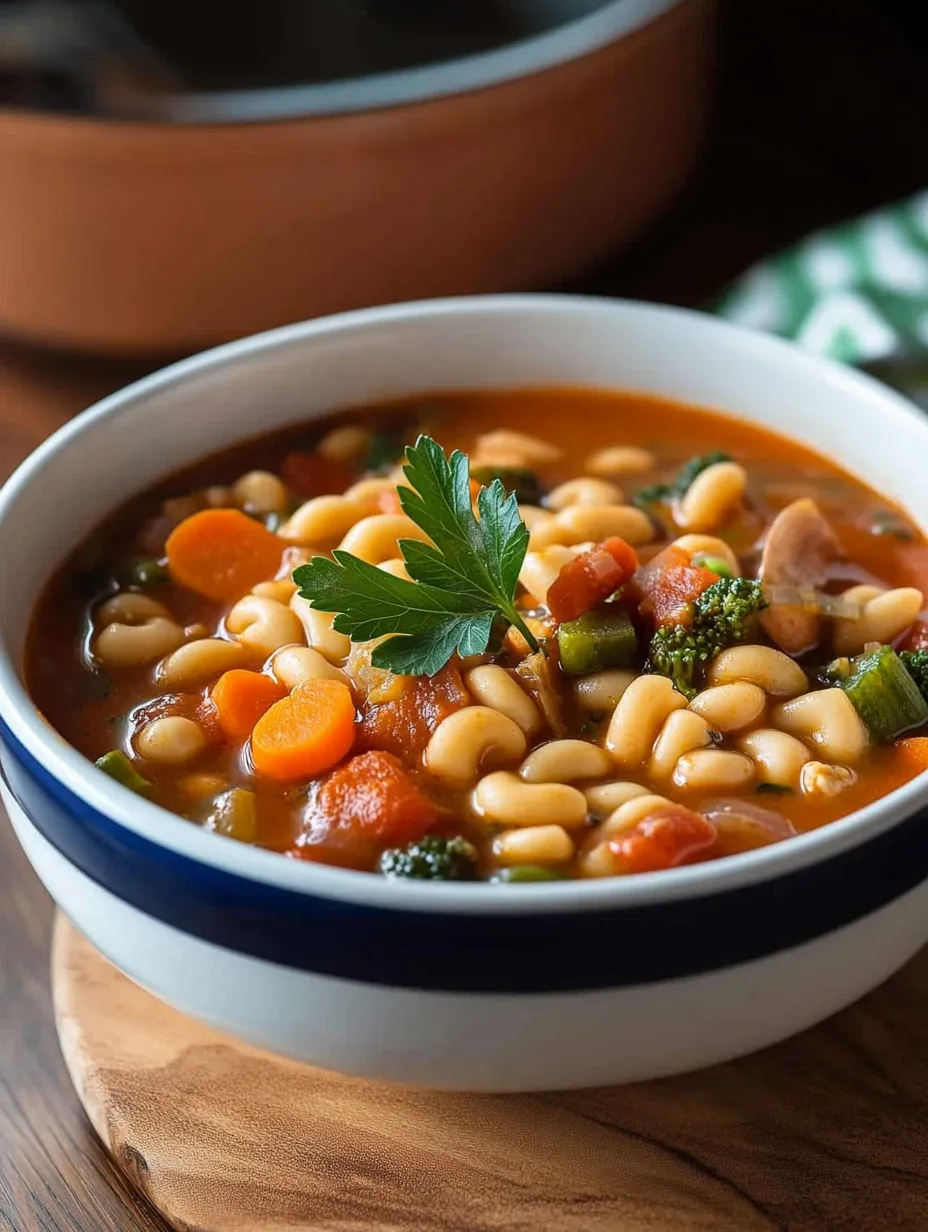 Save
Save
This classic minestrone soup has been my go-to recipe whenever I need a wholesome meal that satisfies both my hunger and my soul. The robust flavors of fresh vegetables simmering in a rich broth create a symphony of tastes that transport me straight to an Italian countryside kitchen.
I first made this minestrone during a particularly cold winter evening when I craved something comforting yet nutritious. What started as a simple pantry cleanout has become a beloved staple that my family requests at least twice a month during the colder seasons.
Ingredients
- Olive oil: provides the authentic Mediterranean base flavor essential for a proper minestrone
- Onion, carrots and celery: this classic mirepoix creates the aromatic foundation that gives depth to any good soup
- Garlic: adds a pungent kick that mellows beautifully during cooking
- Zucchini: contributes a tender texture and mild flavor that absorbs the broth beautifully
- Green beans: add a pleasant snap and vibrant color to your bowl
- Diced tomatoes: brings acidity and natural sweetness to balance the savory elements
- Vegetable broth: the backbone of flavor; choose low sodium to control saltiness
- Dried herbs: oregano and basil infuse the traditional Italian character throughout the soup
- Small pasta: creates heartiness and helps thicken the broth as it releases starch
- Fresh parsley: brightens the finished soup with color and a fresh herbaceous note
Step-by-Step Instructions
- Build the flavor base:
- Cook onions, carrots, and celery in olive oil over medium heat for a full 5-7 minutes until they begin to soften and become translucent. Do not rush this step as it develops the foundational flavors that will carry throughout your soup. Stir occasionally to prevent any browning.
- Bloom the garlic:
- Add minced garlic to the softened vegetables and cook for just one minute until its aroma fills your kitchen. Take care not to burn it as garlic can quickly become bitter when overcooked.
- Create the soup body:
- Add your zucchini, green beans, tomatoes, broth, and dried herbs all at once, then season with salt and pepper. Bring everything to a gentle boil, allowing the ingredients to begin melding together. The liquid should be bubbling consistently but not violently.
- Simmer to perfection:
- Reduce heat to maintain a gentle simmer for about 15 minutes. This slow cooking allows the vegetables to soften while still maintaining their individual textures and allows the herbs to fully infuse the broth.
- Cook the pasta:
- Add your choice of small pasta directly to the simmering soup and cook according to package directions until al dente. The pasta will continue cooking slightly after removed from heat, so err on the side of firmness.
- Finish and serve:
- Ladle the hot soup into bowls and sprinkle generously with fresh parsley. The contrast between the long simmered soup and bright fresh herbs creates the perfect finishing touch.

My favorite thing about minestrone is its forgiving nature. I discovered this when I accidentally added too much pasta once, transforming it into something closer to a thick stew than a soup. My family actually preferred this heartier version, and it taught me that cooking mistakes often lead to delicious discoveries.
Storage and Make-Ahead Tips
Minestrone soup actually tastes better the next day as the flavors have time to meld together overnight. Store leftovers in an airtight container in the refrigerator for up to 4 days. If you plan to make this ahead, consider cooking and storing the pasta separately to prevent it from absorbing too much liquid and becoming mushy. Simply add the cooked pasta to individual portions when reheating.
Seasonal Variations
This classic minestrone shines with different vegetables throughout the year. In spring, try adding fresh peas and asparagus. Summer calls for corn, bell peppers, and tomatoes fresh from the garden. Fall minestrone welcomes butternut squash and kale, while winter versions can incorporate hearty cabbage and potatoes. The beauty of minestrone is that it reflects what's growing in your garden or available at the farmers market.
Serving Suggestions
Transform this soup into a complete meal by serving it with a crusty loaf of Italian bread or garlic bread for dipping. A sprinkle of freshly grated Parmesan or Pecorino Romano cheese adds a salty umami finish that elevates each spoonful. For a dinner party, serve smaller portions in cups as an appetizer before a main pasta course for an authentic Italian dining experience.
The Italian Tradition
Traditional Italian minestrone varies dramatically by region and season. Northern Italian versions tend to be heavier on root vegetables and possibly rice instead of pasta. Southern Italian styles, like this recipe, often feature more tomatoes and sometimes include a parmesan rind simmered in the broth for extra flavor. The word "minestrone" comes from the Italian word "minestra," which simply means "soup." No matter the variation, it represents the Italian philosophy of transforming simple, fresh ingredients into something extraordinary.

Common Recipe Questions
- → What vegetables can I use in minestrone soup?
You can use a variety of vegetables including carrots, zucchini, green beans, celery, or any seasonal vegetables you have on hand.
- → Can I make this soup gluten-free?
Yes, simply substitute the pasta with a gluten-free alternative or omit it entirely for a lighter soup.
- → How do I store leftover minestrone soup?
Store leftovers in an airtight container in the refrigerator for up to 3 days. Reheat on the stove or in the microwave before serving.
- → Can I freeze minestrone soup?
Yes, minestrone soup freezes well. Avoid adding pasta before freezing; cook and add it fresh when reheating.
- → What herbs work best for flavoring minestrone soup?
Dried oregano and basil are traditional choices, but you can also use thyme, rosemary, or fresh parsley for added flavor.
